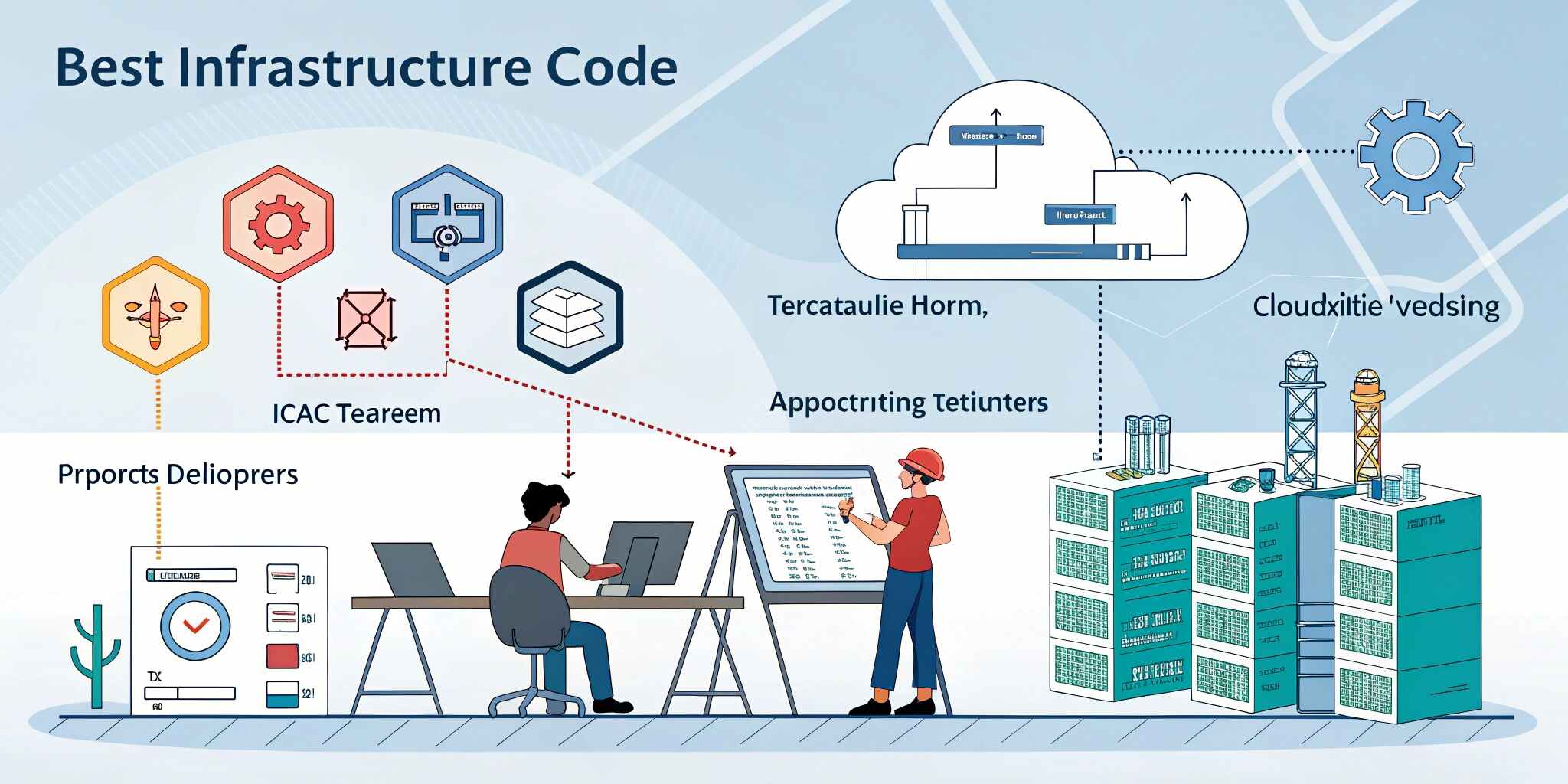In the rapidly evolving landscape of cloud computing and DevOps, automation has become essential for maintaining efficiency and scalability. Infrastructure as Code (IaC) is one of the most transformative practices driving this change. It allows organizations to manage and provision their IT infrastructure through machine-readable configuration files rather than manual processes. This approach brings consistency, speed, and reliability to infrastructure management, making it a cornerstone of modern IT operations.
What is Infrastructure as Code (IaC)?
Infrastructure as Code (IaC) refers to the process of managing and provisioning data centers, servers, networks, and other infrastructure components through code instead of physical hardware configuration or manual processes.
With IaC, developers and system administrators can define infrastructure in files using tools like Terraform, Ansible, or AWS CloudFormation, and deploy it automatically. This ensures that the environment setup remains consistent across development, testing, and production stages.
IaC fits perfectly into DevOps workflows by integrating with CI/CD pipelines, enabling faster software delivery and easier rollback capabilities when needed.
Why Infrastructure as Code Matters
Traditional infrastructure management is often manual, time-consuming, and prone to human error. IaC eliminates these challenges by treating infrastructure as a version-controlled, testable, and repeatable entity.
Key benefits include:
- Consistency: The same configuration file can be reused across environments, eliminating drift.
- Speed: Deploy new infrastructure in minutes, not hours.
- Scalability: Easily adjust resources as workloads grow.
- Cost-efficiency: Automate provisioning to avoid over-provisioning and idle resources.
- Version Control: Infrastructure configurations can be stored in Git, ensuring transparency and auditability.
Top Infrastructure as Code (IaC) Tools
1. Terraform (by HashiCorp)
Terraform is one of the most popular IaC tools, offering cloud-agnostic infrastructure management. It uses a declarative language (HCL – HashiCorp Configuration Language) to define desired states and works with major providers like AWS, Azure, and GCP.
Key Features:
- Multi-cloud compatibility
- Immutable infrastructure
- Reusable configuration modules
2. Ansible (by Red Hat)
Ansible focuses on configuration management and application deployment. It uses YAML-based playbooks to automate server setup and configuration.
Key Features:
- Agentless and easy to learn
- Excellent for managing existing systems
- Integrates with Jenkins, Docker, and Kubernetes
3. AWS CloudFormation
A native AWS service, CloudFormation lets users model and provision AWS infrastructure using templates.
Key Features:
- Deep AWS integration
- Automated dependency handling
- Infrastructure rollback capabilities
4. Pulumi
Pulumi allows developers to use general-purpose programming languages like Python, JavaScript, and Go for infrastructure configuration.
Key Features:
- Developer-friendly syntax
- Cross-cloud flexibility
- Integration with CI/CD workflows
Best Practices for Implementing IaC
- Use Version Control:
- Store IaC scripts in Git or similar repositories to track changes, enable collaboration, and roll back when necessary.
- Follow Modular Design:
- Break infrastructure into smaller, reusable components to simplify updates and reduce duplication.
- Automate Testing and Validation:
- Use tools like Terraform Validate or InSpec to ensure configurations are correct before deployment.
- Maintain Documentation:
- Clearly document infrastructure setup and code to make onboarding and maintenance easier.
- Apply Security Best Practices:
- Implement role-based access, encrypt credentials, and integrate IaC with policy-as-code tools like Open Policy Agent (OPA).
- Implement Continuous Delivery for IaC:
- Integrate IaC scripts into CI/CD pipelines to enable automated infrastructure updates alongside application deployments.
- Regularly Audit and Monitor:
- Continuously review infrastructure configurations to detect drift or misconfigurations.
Challenges in IaC Implementation
While IaC simplifies infrastructure management, it also introduces certain challenges such as managing complex environments, handling multi-cloud security policies, and training teams to write reliable code. Additionally, poorly managed IaC can lead to configuration drift or security vulnerabilities if not continuously monitored.
Organizations must invest in proper governance, testing, and documentation to fully realize IaC’s potential.
Conclusion
Infrastructure as Code (IaC) has revolutionized how businesses deploy and manage infrastructure. By automating resource provisioning and ensuring consistent environments, it strengthens DevOps practices and enhances agility. Tools like Terraform, Ansible, and AWS CloudFormation enable IT teams to build scalable, reliable, and secure infrastructure faster than ever before.
As businesses increasingly move toward hybrid and multi-cloud environments, adopting IaC is no longer optional — it’s essential for maintaining competitive advantage, reducing costs, and accelerating digital transformation.


